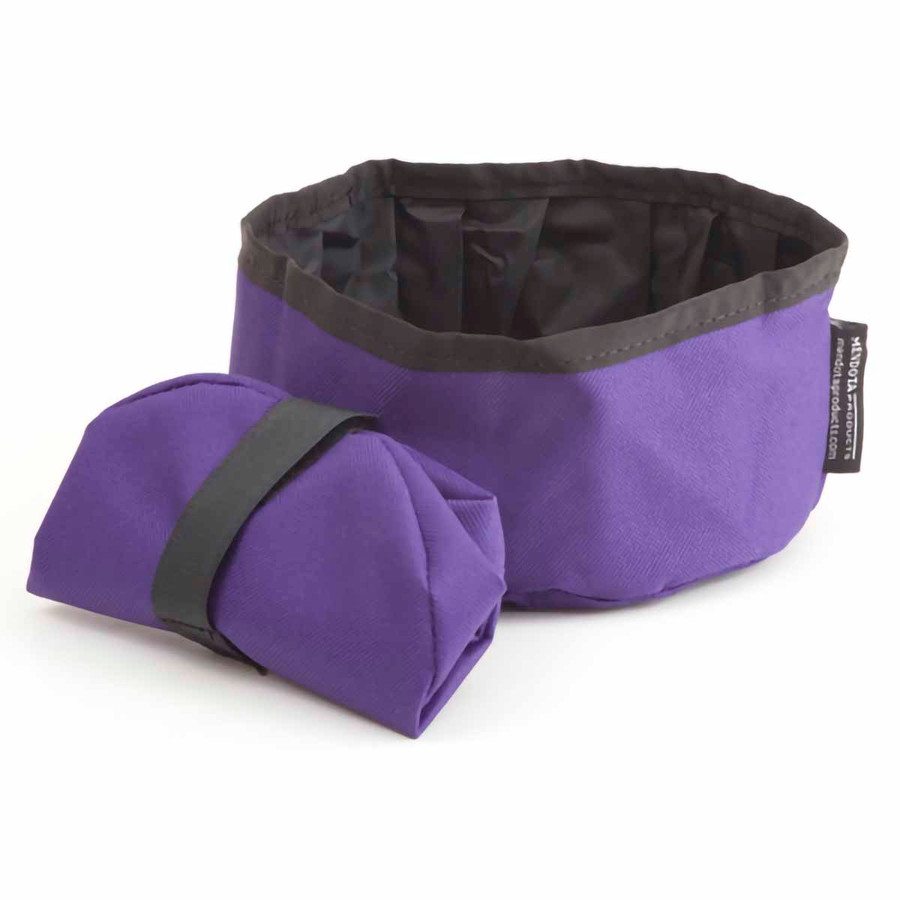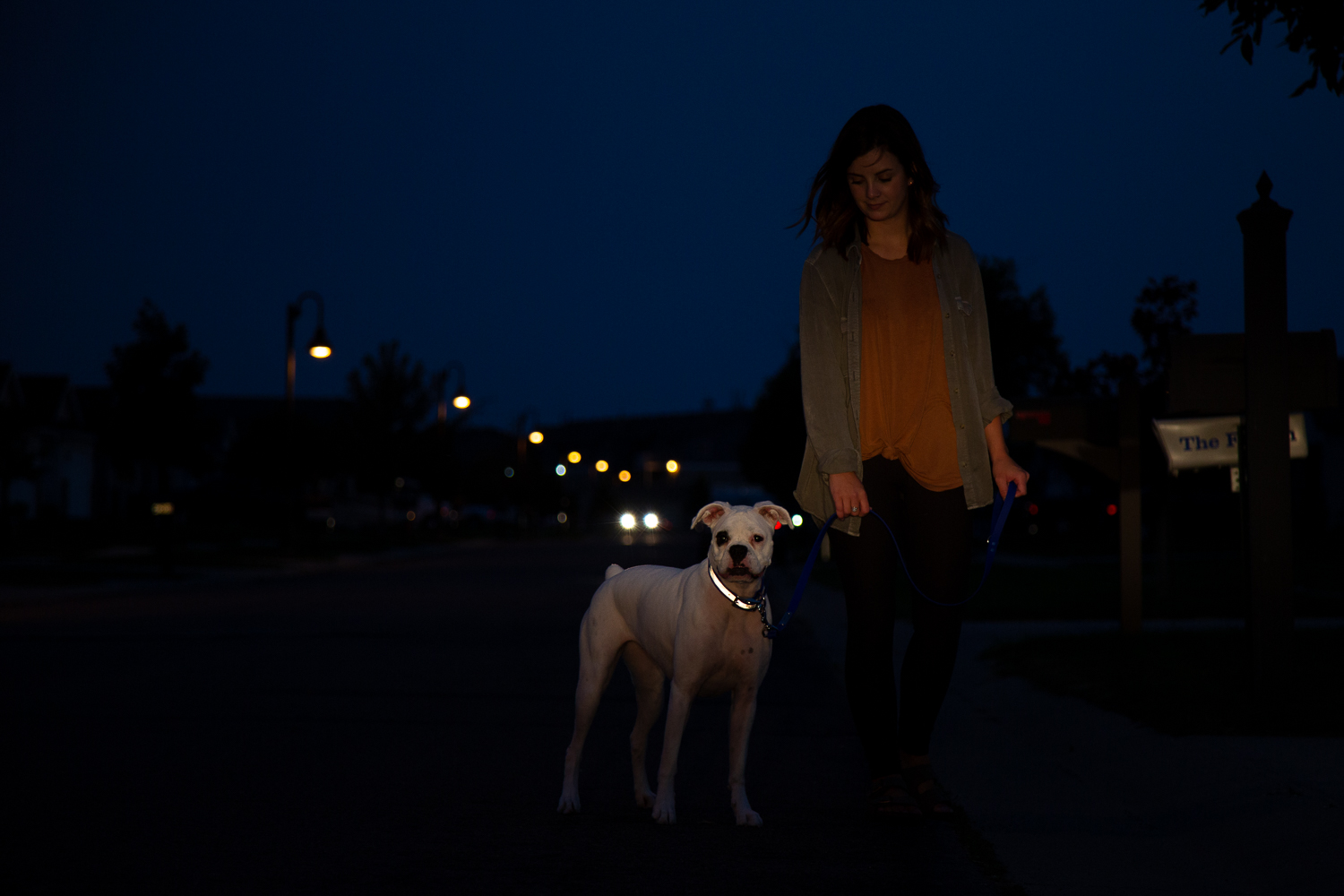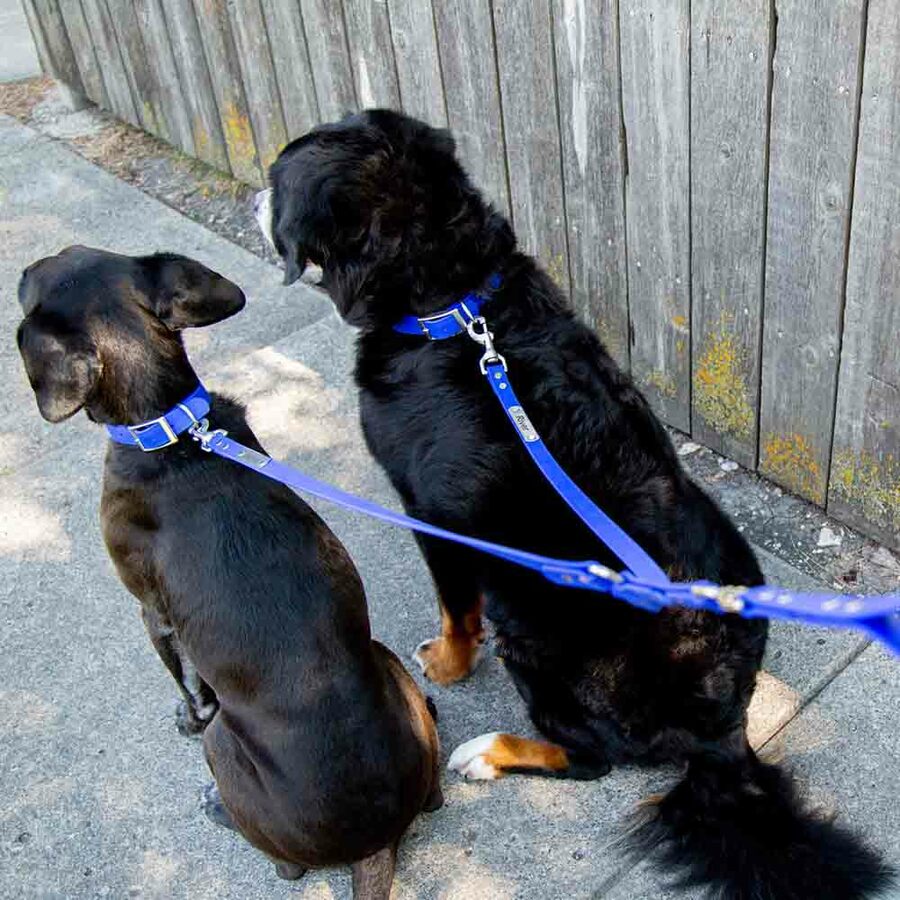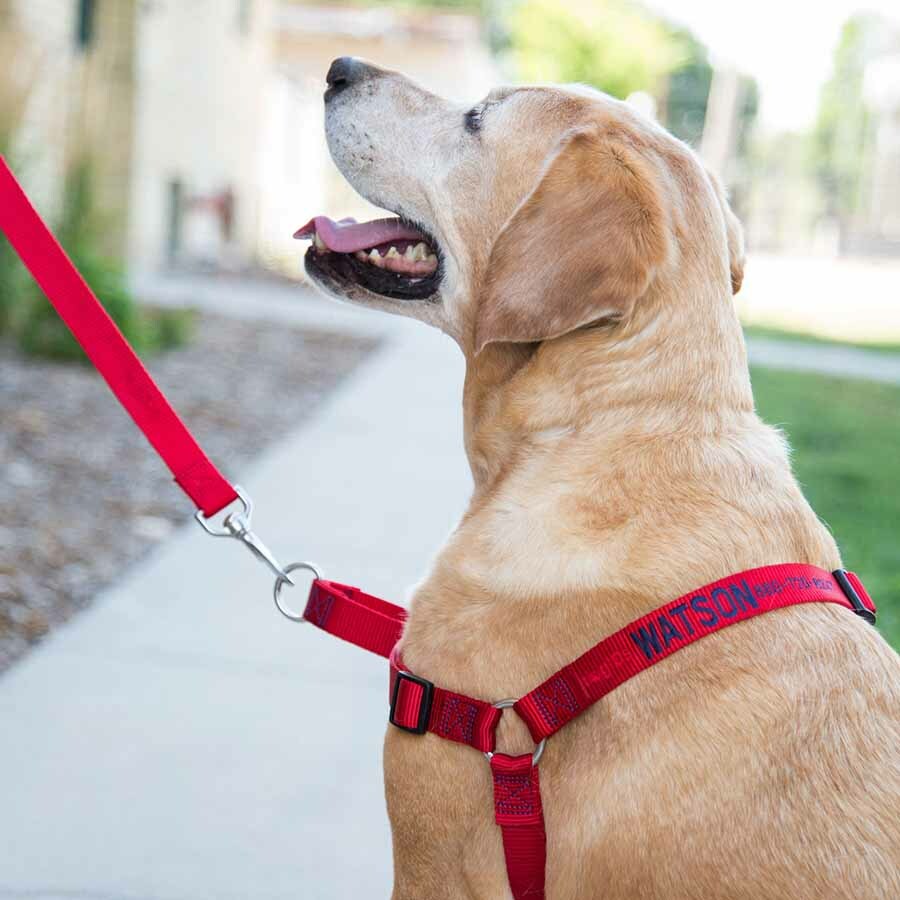It’s National Walk Your Dog Month!
Here are some tips to keep in mind when walking your pup during the different seasons.
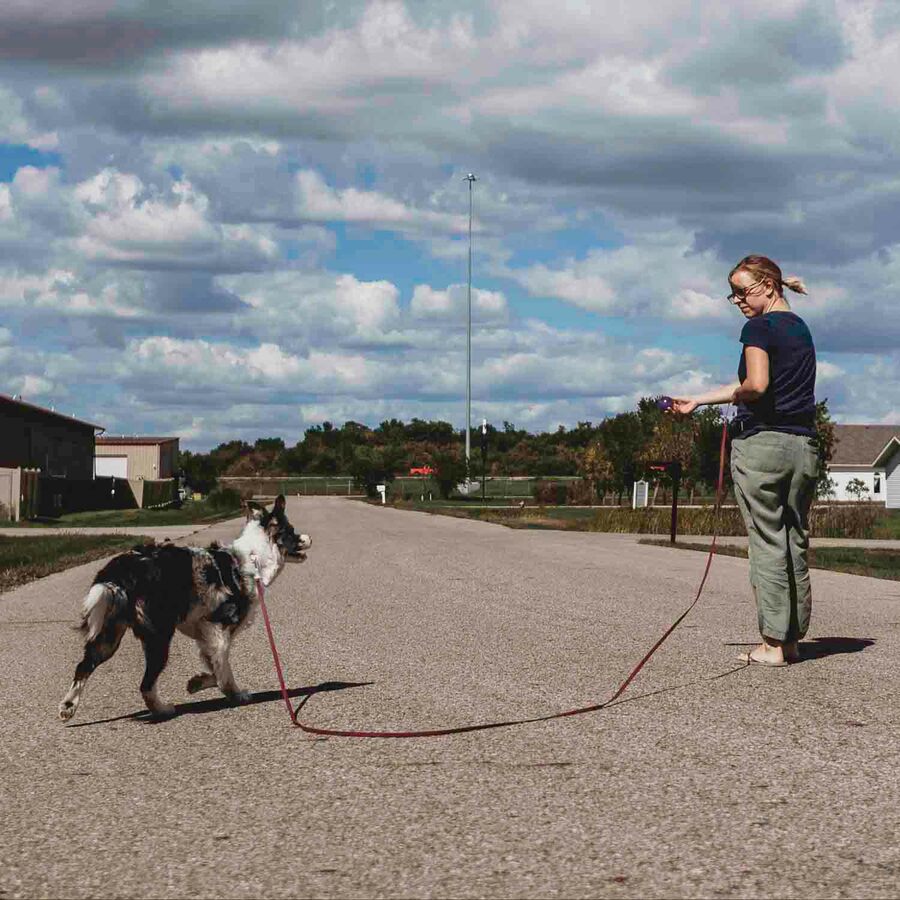
Walking Your Dog in the Summer
1. Walk Your Dog When It’s Cool Outside
During the summer months the pavement gets to be pretty hot and can lead to burning your pup’s paws when on walks. The best time to walk your dog is in the morning or late evening, when the pavement is cool. Avoid walking your dog in the afternoon when the sun is high in the sky or early evening, because the pavement will be hot.
2. Stay On The Grass
If you can’t get around the hottest times in the day to walk your dog, try sticking to only walking on grass to prevent the dog from burning his or her paws on the sidewalk or street. Try bringing them to a park and stick to shady areas. In these cases, think of bringing a travel dog water bowl or water bottle to always keep them hydrated.
3. Paw Wax
Paw wax can be rubbed onto your dog’s paw pads and forms a semi-permeable barrier over your pet’s sensitive paws. We wear shoes on our feet to protect them, but dogs usually don’t. The paw wax can help protect dog paws from harmful surfaces, including hot surfaces, sand, ice, and harmful chemicals like road salts.
Here are some signs if your dog’s paws are hurting during your summer walks:
- Limping or avoiding to walk
- Licking or chewing their feet
- Dog’s paw pads are darker in color than usual
- Dog’s paw pads are visibly damaged
- If blisters or redness appears on dog’s paw pads
Walking Your Dog in the Winter
1. Dog Booties, Sweaters, And Jackets
Just like us, having that extra layer helps us keep warm. Dog booties are great to use for your pup when it’s cold or hot outside to protect their paws. Keep in mind that not all dogs can get used to wearing clothing, and some have a hard time walking in booties so there will be an adjustment period.
2. Look For Cues
Remember to look for signs in your dog when walking to see if they’re handling the cold weather. These signs can include whining, lifting or licking their paws excessively, and shivering.
3. Stick To Sidewalks
Unless your dog is a cold-loving breed, such as a Siberian Husky or an Alaskan Malamute, you’ll probably want to keep them out of the deep snow for longer walks. If cold snow touches your dog's soft and unprotected belly, they will chill much faster. Many dogs do not have fur on their bellies, so wading in deep snow may be fun for a few minutes but could make your dog much colder on extended walks. Stick to cleared sidewalks and trails, and leave the snow jumping for shorter time periods of backyard play.
4. Reflective Collars and Leashes
The days get shorter in the winter so keep in mind those night walks and how to stay visible. Whether that’s attaching a light to the dog’s collar or having them wear a reflective dog collar and/or reflective dog leash this will keep your walks safer and easier to see your dog ahead of you.
Here are some signs if your dog’s paws are hurting during your winter walks:
- Dog’s paws are splitting showing sores
- Limping or avoiding to walk
- Licking or chewing their feet
- Dog’s paw pads are visibly damaged
And for walking your dog no matter the weather, these leashes and collars dogIDs offer can help. From walking multiple pets to teaching them not to pull, there are several products that can help make your walks less stressful.
Waterproof Chain Martingale Collar

This waterproof and odor-proof martingale collar features a buckle and chain that sits loose and comfortable during daily doggie activities. When your pup is on a walk and begins to pull on the leash, the collar snugs up and evens out the pressure. Your dog should then be able to learn how to correctly walk without pulling. Or you can get the Waterproof Training Pack that comes with a collar and leash.
Waterproof Tangle-Free Double Dog Leash
If you have more than one pup you walk at a time, this is the perfect leash to get to avoid getting tangled during your walks.
No Pull Embroidered Dog Harness
If your walks are short-lived because your dog likes to pull on their leash or zig zag across your path, you and your dog could benefit from a No Pull Embroidered Dog Harness. It’s a classic harness with a martingale-style loop across the chest for even more control.
I hope this makes your walks easier and more fun!


